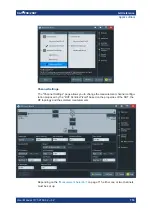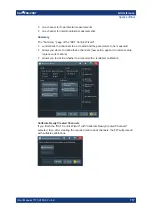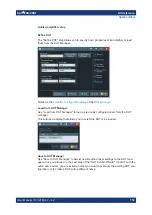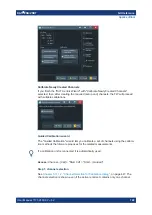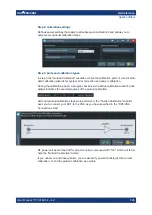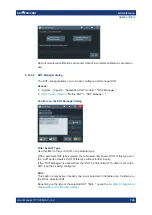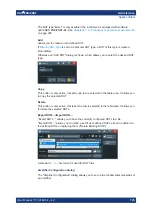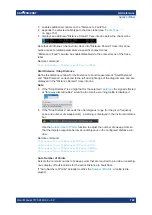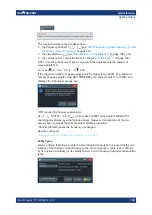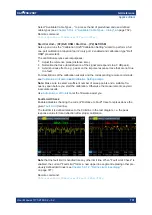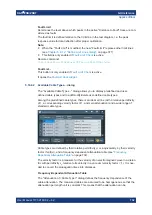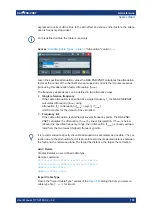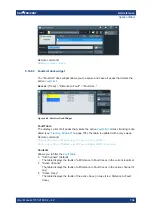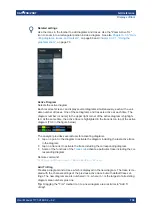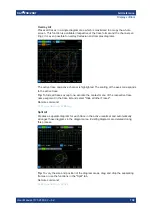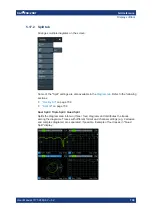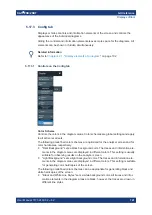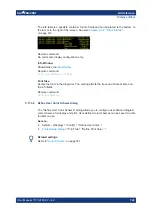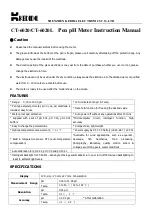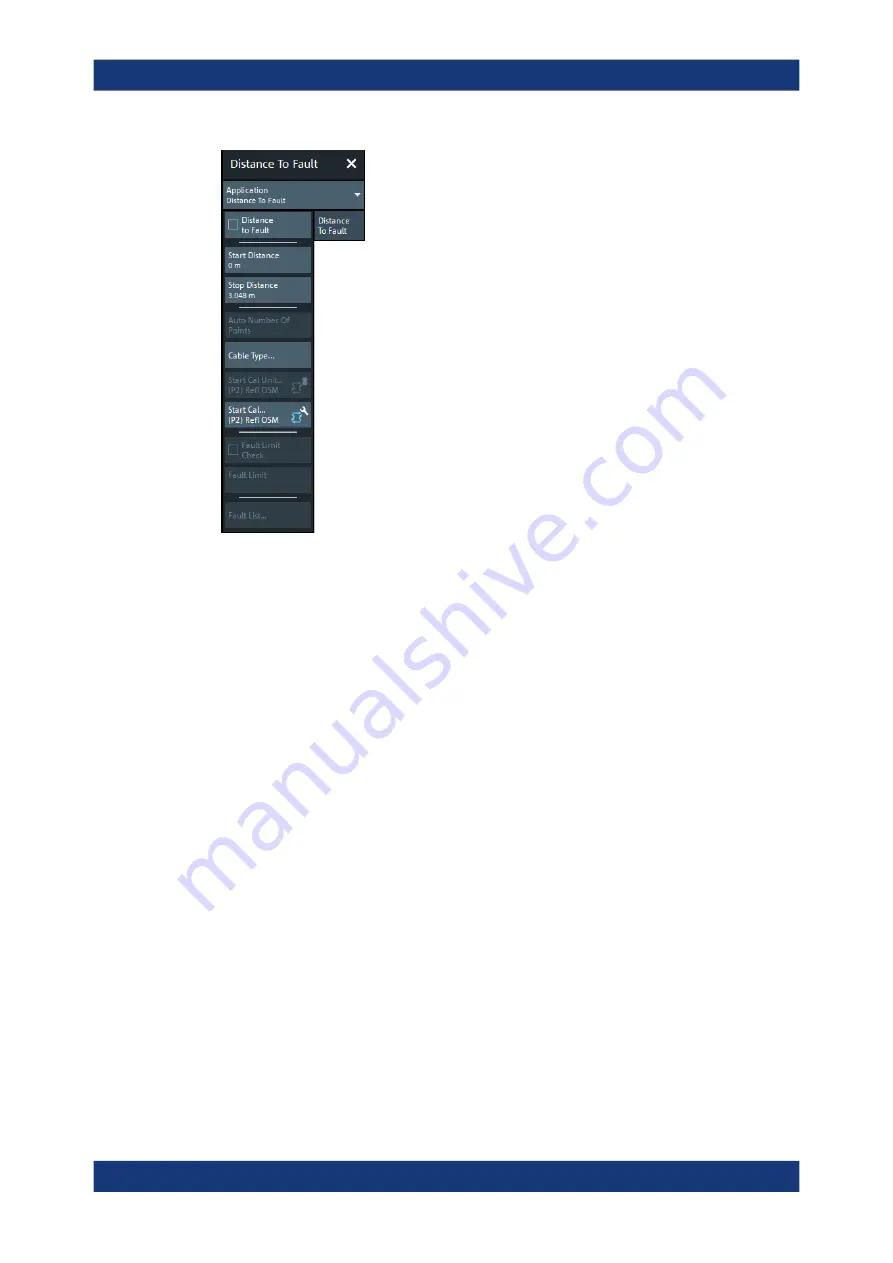
GUI reference
R&S
®
ZNB/ZNBT
728
User Manual 1173.9163.02 ─ 62
A standard DtF measurement is prepared in the order from top to bottom:
1. Enable DtF measurement, see
2. Configure the distance window, see
"Start Distance / Stop Distance"
3. Adjust the number of sweep points (and, if necessary, the frequency span), see
4. Select (or define and select) a suitable cable type, see
5. Perform a full one-port calibration at physical port 2, see
OSM / Start Cal... (P2) Refl OSM"
You should now be able to locate the faults (peaks) by examining the trace.
You can also let the firmware generate a list of faults by enabling
and defining a suitable
detected faults.
Distance to Fault
Activates/deactivates Distance to Fault representation for the active trace.
Note
that "Distance to Fault" can only be enabled, if the active channel is configured to
If the active trace is a reflection trace S
ii
, the analyzer firmware assumes that the DUT
is connected to port
p=i
. Otherwise it assumes that the DUT is connected to port
p
=2.
When activating "Distance to Fault", the analyzer firmware
●
sets S
pp
as measured quantity of the active trace
●
proposes a reflection normalization at port
p
(see
"Start Cal Unit... (P2) Refl OSM /
Applic softtool



